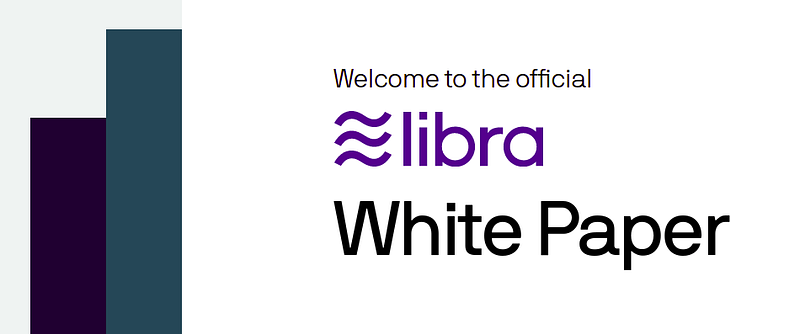Crypto Market Commentary
18 June 2019

Doc's Daily Commentary
On 6/14 Doc conducted the first “House of Pain” coaching session, which is posted in the “Trade School” archive. Let me know if you have any interest in being a participant.
Our most recent “ReadySetLive” session from 6/13 is listed below.

Mind Of Mav
A Quick Breakdown Of Everything Libracoin
How should you view a project like this?
- Privacy: will this project be designed to preserve freedoms, or is this just another way to gather consumer data?
- Security: is the new network truly immutable, and how is it governed?
- Growth: who are the stakeholders and how will this network grow; is this organic and fair, or some kind of structured pay-to-play?
- Accessability: who will have access to this system, and is there any plan to subsidize infrastructure improvements to help with that?
- Technology: what does this look like under the hood, and can it even be truly called a cryptocurrency?
Who’s Involved?
Before we try to rationalize the motivations or understand the true nature of this project, it may help to know who’s involved. The Libra Association will serve as the backbone for governance of the network.
Taken directly from the whitepaper, here’s the initial membership of the Libra Association:
- Payments: Mastercard, PayPal, PayU (Naspers’ fintech arm), Stripe, Visa
- Technology and marketplaces: Booking Holdings, eBay, Facebook/Calibra, Farfetch, Lyft, MercadoPago, Spotify AB, Uber Technologies, Inc.
- Telecommunications: Iliad, Vodafone Group
- Blockchain: Anchorage, Bison Trails, Coinbase, Inc., Xapo Holdings Limited
- Venture Capital: Andreessen Horowitz, Breakthrough Initiatives, Ribbit Capital, Thrive Capital, Union Square Ventures
- Nonprofit and multilateral organizations, and academic institutions:Creative Destruction Lab, Kiva, Mercy Corps, Women’s World Banking
The membership is expected to grow to at least 100 organizations before the official launch in Q1/Q2 of 2020. Notably present at this stage is Coinbase, which could be a good sign for interoperability between the Libra coin and the existing cryptocurrency marketplace.

So what does the whitepaper say?
The introduction opens with a sympathetic tone and references the portion of the world’s population who are unbanked or underbanked, and the rate of technological change in those regions.
Blockchains and cryptocurrencies have a number of unique properties that can potentially address some of the problems of accessibility and trustworthiness. These include distributed governance, which ensures that no single entity controls the network; open access, which allows anybody with an internet connection to participate; and security through cryptography, which protects the integrity of funds.
This section closes by expressing the opinion that existing cryptocurrency and blockchain networks have not reached mass adoption due to volatility and complexity.
Now is the time to create a new kind of digital currency built on the foundation of blockchain technology.

How does it work?
The scope of Libra is defined as follows:
- It is built on a secure, scalable, and reliable blockchain;
- It is backed by a reserve of assets designed to give it intrinsic value;
- It is governed by the independent Libra Association tasked with evolving the ecosystem.
While the core Libra docs don’t get into too much detail, the full technical whitepaper can be found here. Overall, it’s a permissioned blockchain with a private set of validator nodes and a public token of value. The token is managed similarly to many stablecoins, but limits who can participate in the monetary creation process to a set of authorized resellers.
The Libra Association is an independent, not-for-profit membership organization headquartered in Geneva, Switzerland.
Governance
From a governance perspective, Facebook has created a ‘regulated subsidiary’ which will be known as Calibra to act as a technical team for the Libra Association. The whitepaper stresses that this will ensure that financial information is kept separate from social data. We will revisit this point later.
For now, Libra will run as a permissioned blockchain. The whitepaper cites unstability and scaling issues as the primary reasons for this decision, but there is a note that the future will hopefully see this transition to an entirely permissionless system.

The Libra Blockchain
The proposed permissioned blockchain is similar in some respects to a Hyperledger Network (check out our free course on Private Blockchains here). The network supports many of the common features of a blockchain, but has some limitations as a permissioned system which should be considered carefully.
Value Transfer
The Libra Network will allow users to transfer value using a new unit called a Libra. The token will not be pegged to any particular currency, but will be backed by a stable reserve supported by member organizations. While the whitepaper states that the network will be open and fair to all who wish to join, this is somewhat untrue as the member organizations can at any time choose to blacklist a user and stop processing their transactions.
NOTE: The Libra coin can still be frozen just like traditional financial assets.
Read more about the reserve here.
Immutability
A state object is cached throughout the network to help with scalability, and all records are hashed to a single merkle tree structure. In this way, the network is immutable so long as all of the Libra Association Nodes do not conspire to change the network history.
The ledger will be publicly available, however, so auditing agencies can still detect and penalize fraud. Unfortunately, there’s no way for the blockchain to reflect the true amount held in reserve, as this information isn’t on the blockchain.
NOTE: The Libra coin is subject to inflation or deflation if any of the member organizations conspire to change the rules.
Smart Contracts
The Libra network will feature smart contract and value transfer capabilities similar to Ethereum or other Virtual Machine networks. This will provide a convenient way for users to write software which can be executed across the network and recorded immutably. (More on decentralized computing)
Following the same path as many cryptocurrency projects, the Libra network will use a proprietary programming language called Move. More on the new language here.
Privacy
This one probably requires a direct quote:
The Libra Blockchain is pseudonymous and allows users to hold one or more addresses that are not linked to their real-world identity. This approach is familiar to many users, developers, and regulators. The Libra Association will oversee the evolution of the Libra Blockchain protocol and network, and it will continue to evaluate new techniques that enhance privacy in the blockchain while considering concerns of practicality, scalability, and regulatory impact.
It’s difficult for me to see anyone who cares about privacy actually adopting this new offering, particularly given Facebook’s laughable record on respecting their users’ privacy choices.
The Libra Reserve
Things get a bit complicated when you look under the hood at how this funding works. While the Libra Association is a non-profit, it plans to pay dividends to member organizations who contribute funds to the reserve. There’s not much mentioned about how these dispersals will work, but one can imagine this privilege will not be evenly dispersed.
Token Creation Process
Libra tokens can only be minted by depositing a corresponding amount of liquid assets or short term convertible securities into the reserve. Only authorized resellers will be permitted to interact with the reserve and can only purchase Libra at the current market price by depositing other liquid assets into the reserve. The rules are still a bit murky:
The association does not set monetary policy. It mints and burns coins only in response to demand from authorized resellers. Users do not need to worry about the association introducing inflation into the system or debasing the currency. For new coins to be minted, there must be a commensurate payment of fiat by resellers into the reserve. src
One interesting problem here is that if the list of authorized resellers were to choose not to purchase, there is no token creation possible. If the system can be sufficiently decentralized, it’s possible this could be mitigated, but otherwise it could present a substantial problem in the event of a change in market conditions that affected a majority of the list.
“Fully Backed Token”
Libra tokens can only be minted by depositing a corresponding amount of liquid assets or short term convertible securities into the reserve. While on it’s face this seems reasonable, there are a myriad of ways that the value of the reserve notes could decrease relative to the minted tokens.
How did the whitepaper score against our original criteria?
- Privacy: while it does appear that the network will be pseudonymous, and it seems that the KYC / AML procedure as outlined
- Security: permissioned blockchains are an established solution, but in this case the reserve value and all the other operations of the network will be administered by the association and not the technology
- Growth: the founding network members compose a major component of the US and Global Economies, and nearly dominate the technoloy sector. Notably absent from the mix are Google, Apple, or Microsoft.
- Accessability: while the whitepaper frequently references the need for a true global currency, and holds a humanitarian tone, the owners of this system will be the initial stakeholders and the privilege of monetary creation will not be likely to shift from there.
- Technology: the Libra network is essentially a private blockchain with a public token. Early stakeholders will buy in and receive the right to validate blocks, and users will have to trust that they will act accountably.
Is anything here new?
A lot of this is new. The main thing that appears to have been accomplished is the creation of a permissioned blockchain with a public token. While these two ideas have existed before as independant concepts, the added brand strength of the founding partners in this case may provide a common basis for the use of this token.
In short, this announcement marks the beginning of a new kind of capital, which exists between companies for the betterment of their customers. However, unless backed by true cryptographic assets, the reserve will not be able to be verified programmatically and can still be subject to manipulation or mismanagement.
While this might not be a perfect solution, it may have the potential to provide a new form of financial security for millions around the world. The question will be whether the consortium of partners can remain stable throughout that period. Who knows, maybe it will collapse and all their users will switch to BTC 🙂
Libra Resources
Main Libra Whitepaper Docs here.
Full Technical Whitepaper here.
Developer Resources here.
Move Smart Contract Language Docs here.
Move Whitepaper “A Language With Programmable Resources” here.
Press the "Connect" Button Below to Join Our Discord Community!
Please DM us with your email address if you are a full OMNIA member and want to be given full Discord privileges.
An Update Regarding Our Portfolio
RSC Subscribers,
We are pleased to share with you our Community Portfolio V3!

Add your own voice to our portfolio by clicking here.
We intend on this portfolio being balanced between the Three Pillars of the Token Economy & Interchain:
Crypto, STOs, and DeFi projects
We will also make a concerted effort to draw from community involvement and make this portfolio community driven.
Here’s our past portfolios for reference:
RSC Managed Portfolio (V2)
[visualizer id=”84848″]
RSC Unmanaged Altcoin Portfolio (V2)
[visualizer id=”78512″]
RSC Managed Portfolio (V1)

